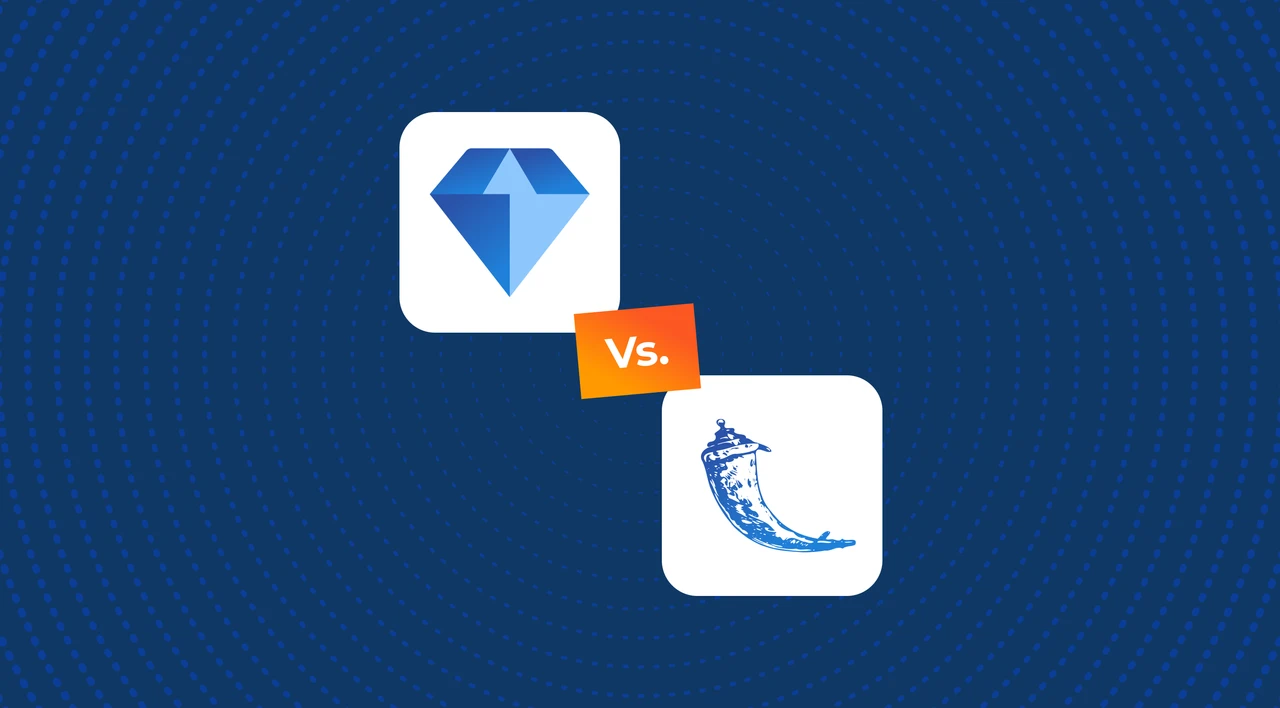SHARE
Ruby on Rails vs. Flask: Which is Better in 2026?

Contents
Contents
Introduction
Ruby on Rails and Flask are popular back-end frameworks for building web applications. These frameworks provide the resources and tools to deploy web apps and handle demanding tasks, such as routing and web server configuration.
Rails and Flask frameworks significantly reduce the complexity involved in the development process. Additionally, they reduce costs and allow developers to save the time needed for coding. However, they have different architectural patterns that help them execute various operations uniquely. This article compares both frameworks and will help you decide which is better in 2024.
What is Ruby on Rails?
Ruby on Rails is a back-end web framework written in the Ruby language. Known for its ease of use and comprehensiveness, this framework prioritizes convention over configuration to simplify web server configuration and coding without impeding quality. With this, developers can create scalable and custom web applications more quickly. Rails utilizes markup technologies like CSS, HTML, and JSON to design appealing web pages.
Rails also follow the Model-View-Controller pattern, a widely used architectural pattern. This separates coding into three parts – the database, the user interface, and the business logic. It allows the developer to work on each aspect and create a scalable application with a structured approach. Rails have features, such as scaffolding and Active Records. The former enables developers to generate code for fundamental functions like CRUD. On the other hand, Active Record is an ORM tool that simplifies database interaction.
Rails are popular for small-scale to large-scale applications. It was used to build Twitter and Airbnb.
What is Flask?
Flask is a popular web framework written in Python language. It’s an easy-to-use and lightweight framework for building light or small-scale web apps without relying on distinct libraries.
Its high scalability and ease of modification distinguish this web framework from other small-scale frameworks. With Flask, developers can build scalable and functional web apps quickly and are backed with an array of libraries and resources.
Some of the features of this platform include; routing, HTTP request handling, testing and debugging, and templating. With Flask’s routing mechanism, a user’s requests can be effectively mapped out to the particular view functions responsible for providing the corresponding response.
Similar to the CoC, the Flask framework has a templating engine called Jinja2 that separates business logic from presentation. This allows developers to reuse web components.
For secure and reliable HTTP request handling, Flask utilizes Werkzeug. This toolkit is essential for building robust applications with adequate security measures.
Advantages of Ruby on Rails over Flask
- Rails makes building web applications more convenient, thanks to its array of tools.
- Rails’ modular architecture allows for on-the-spot modification.
- It has a large community with tons of resources and tools available to developers for learning and troubleshooting.
- It follows the CoC approach to ease configuration.
- It has an in-built testing functionality to make test code convenient.
Advantages of Flask over Ruby on Rails
- The Flask framework is suited to lightweight web applications.
- It’s convenient to use due to its uncomplicated architecture. This makes it quite fast, unlike Ruby on Rails, which can be relatively slow sometimes in performance.
- It provides all the required tools without relying on specific libraries.
- It is highly modifiable and flexible, allowing developers to create tailor-made applications.
- Allows third-party extension.
Ruby on Rails vs. Flask Comparison
The comparison between Rails and Flask has divided opinions among developers who believe one to be better. We shall compare both frameworks and decide which is better.
Programming Language
Rails web application framework is built on Ruby, while Flask is written in Python. Both are readable and user-friendly programming languages, and the choice of language depends on personal preference and the project’s requirements.
Python is simple and has a clear syntax, making it convenient to read and write. Ruby is also simple but has a more expressive syntax. Python is also more extensive than Ruby, with various ecosystems and frameworks utilizing the language.
Although both languages are quick and simple, they aren’t the best choice for highly-intensive computational operations because of their limited use cases.
Learning Curve
Both Flask and Rails communities provide comprehensive documentation and educational resources that are accessible. They serve as guidance for using the framework. With these resources, developers can learn how to create powerful web apps.
However, the learning curves differ. For example, learning Rails might be challenging for those unfamiliar with Ruby. Therefore, the learning curve is steep. Compared to Rails, learning Flask is much easier, given that the Python language is relatively easier to understand than Ruby. Python is a beginner-friendly language with a convenient syntax. As a result, the learning curve is gentle.
Stability
Rails and Flask have release cycles where they roll out updates for improved stability in performance. Significant updates are released periodically with Rails, often with upgraded features. However, developers may experience issues with coding and web server configuration with older versions.
Flask’s updates are more frequent than Rails. The releases focus mainly on bug fixes and security.
Community Support
Rails has a larger and more active community and support than Flask because it has been around longer. Both communities provide comprehensive documentation and support through forums to developers.
Popularity
Rails is relatively more popular than Flask. Besides being around longer, Rails requires significantly less manual configuration than Flask. Additionally, it has a stable architecture that uses the Convention Over Configuration approach. This is why it’s more popular than Flask.
Ruby on Rails vs. Flask: Which Web Application Framework?
Ruby on Rails and Flask are great platforms for building web applications, but their architecture will determine what kind of applications you can create. Compared to Flask, Rails is better for building medium to large-enterprise high-end applications. It has several tools and features for developing efficient web apps.
On the other hand, Flask is best suited to small-scale applications because it lacks specific features like access control and user authentication to build high-end apps. As a result, it relies on third-party tools and libraries. This increases the complexity of building software applications.
Summary
Ruby on Rails and Flask are good frameworks that have specific use cases. They have their features, advantages, and limitations, which you must consider before deciding. Overall, they are capable and well-equipped to handle your next web project.
Frequently Asked Questions
What alternatives are there to Ruby on Rails and Flask?
Alternatives to Rails and Flask include Django, Spring Boot, Phoenix, Laravel, Asp.NET, CakePHP, and Koa.
How do you learn the Ruby on Rails framework?
You can learn Ruby on Rails through its vibrant community. Members who are fellow developers provide comprehensive tutorials and resources to guide learners. Also, you can take up a course on popular e-learning platforms like Udemy or Coursera for a fee. If you’re not willing to pay a fee, you can use YouTube.
What is a full-stack framework?
A full-stack framework provides the required environment to create front-end and back-end web applications. Rails and Flask are back-end web networks.
Where can I find a Python Flask tutorial?
You can find Python Flask tutorials on the website and YouTube. The community section provides well-detailed tutorials on using Flask to deploy web apps.
How does Ruby on Rails enable rapid development?
Rails is straightforward and well-structured due to its CoC and MVC models, which minimizes the configuration and time required to code. This allows you to build web apps in no time.
Expert Ruby on Rails Development Services
Flatirons Development is a top-rated Ruby on Rails service provider.
Get the CEO's Take
Handpicked tech insights and trends from our CEO.
Expert Ruby on Rails Development Services
Flatirons Development is a top-rated Ruby on Rails service provider.
Get the CEO's Take
Handpicked tech insights and trends from our CEO.

Enterprise Computing: Transforming Business Operations
Flatirons
Oct 09, 2025
Explore the Top Embedded Systems Examples of Today
Flatirons
Oct 04, 2025
Best Manual Testing Tools to Boost Your Software Quality
Flatirons
Sep 28, 2025
Digital Product Development: Enhance Your Business Offerings
Flatirons
Sep 12, 2025
React SEO: Optimize Your React Apps for Search Engines
Flatirons
Sep 07, 2025
Will Software Engineers Be Replaced by AI?
Flatirons
Aug 31, 2025